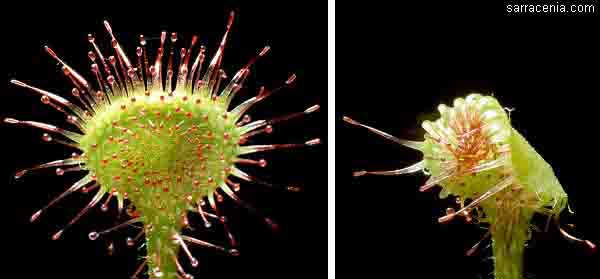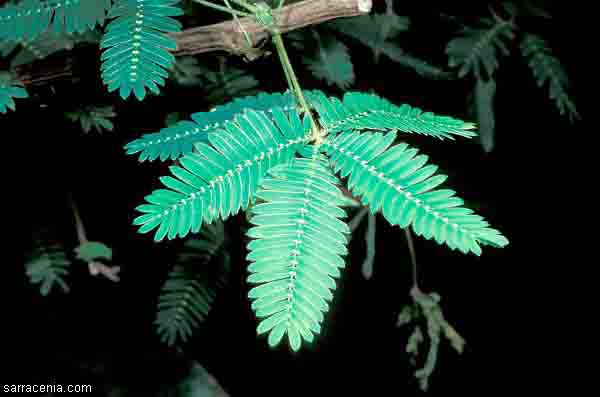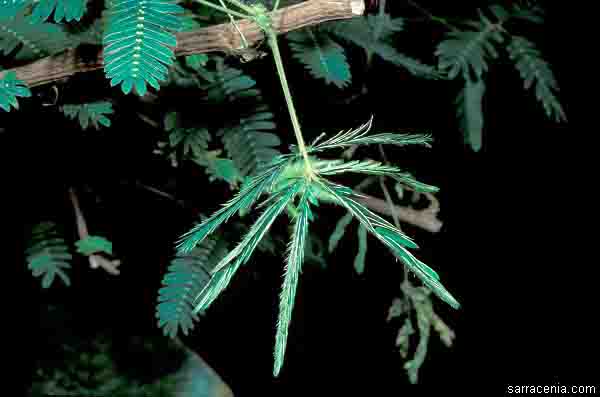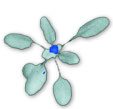 Mechanosensory Responses of Plants. We are interested in how plant perceive mechanical and other types of environmental stimuli, and how molecular and developmental responses are regulated. Genetic screens are underway to identify functional components of the mechanosensory and environmental response pathways of plants. This work is funded by the Department of Energy. Mechanosensory Responses of Plants. We are interested in how plant perceive mechanical and other types of environmental stimuli, and how molecular and developmental responses are regulated. Genetic screens are underway to identify functional components of the mechanosensory and environmental response pathways of plants. This work is funded by the Department of Energy.
"In Touch: Plant Responses to Mechanical Stimuli" Braam, 2005, New Phytologist Tansley Review 165: 373-390. Link to PDF (Additional lovely photos of carnivorous plants by Barry A. Rice, Ph.D.at http://www.sarracenia.com/galleria/galleria.html)

"From the violence of tree strangling and insect trapping to the elegance of roots navigating through barriers in the soil, responses to mechanical perturbation are integral features of plant behavior. Although some plants have very specialized touch response machinery and rapid and highly noticeable behaviors, touch responses of other plants may occur slowly over time and are often therefore not easily recognized or appreciated. Yet probably all plants sense and respond to mechanical forces. Indeed, cellular responses may be critical for fundamental processes such as turgor regulation, cellular expansion and morphogenesis. The mechanistic bases of touch perception and inter- and intra-cellular signaling are not well understood. It is also unclear whether the widely diverse responses are related at either the perception or response level or whether the mechanisms and machinery used by single cells to respond to mechanical perturbations such as turgor fluctuations are related to those used at the organ or tissue level to react to externally applied mechanical forces." (Text and photos reproduced with permission from New Phytologist).
 
"Genome-wide identifictaion of touch- and darkness-regulated Arabidopsis genes: a focus on calmodulin-like and XTH genes" Lee, Polisensky and Braam, 2005, New Phytologist 165: 429-444. Link to PDF
"Microarrays and quantitative RT-PCR were conducted to identify genes and analyze behaviors of calmodulin-like (CML) and xyloglucan endotransglucosylase/hydrolase (XTH) genes. Strikingly, 589 genes have touch-inducible expression; 171 have reduced expression. Darkness increases expression of 461 genes and decreases expression of 72 genes. Over half of the touch-inducible genes resemble the TCH genes in that they are also upregulated by darkness; 67% of those darkness-inducible are also touch inducible. Expression of 12 CMLs and four XTHs is elevated by touch; three XTHs have reduced expression. In darkness-treated plants, 10 CMLs and nine XTHs have increased expression and one XTH is repressed. Over 2.5% of total genes are touch-inducible. Many are also darkness upregulated, consistent with the hypothesis that these stimuli have partially overlapping signal transduction pathways. Regulated gene identities suggest that calcium and kinase signaling, wall modification, disease resistance and downstream transcriptional responses may be altered in response to mechanostimulation or darkness." (Text reproduced and figure adapted with permission from New Phytologist).

|





